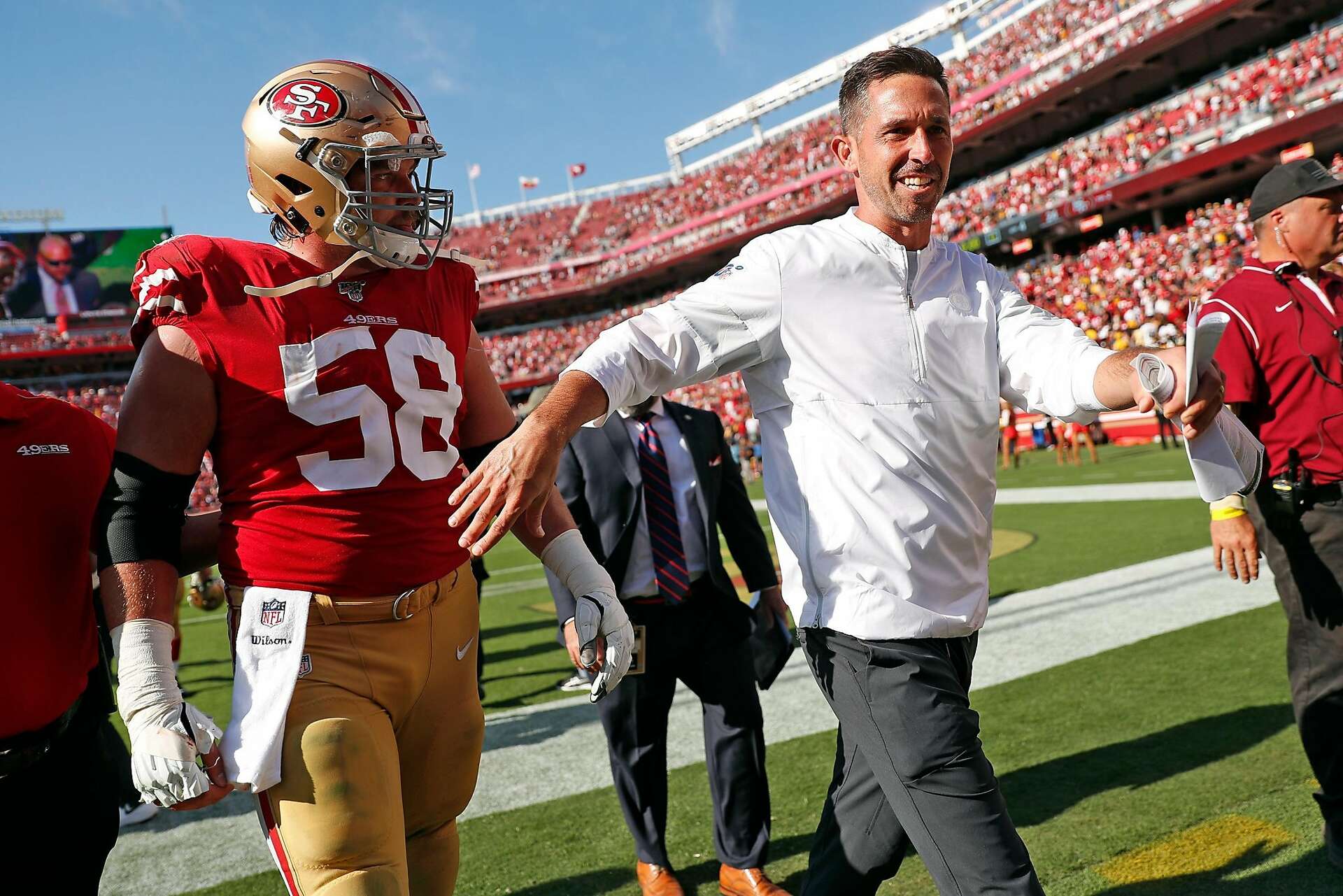After a deflating loss to the Houston Texans — in which the San Francisco 49ers’ defense surrendered nearly 500 yards of offense and failed to generate significant pressure on quarterback C.J. Stroud — the 49ers’ front office faces a watershed moment ahead of the trade deadline. ClutchPoints+2Last Word On Sports+2 With their Super Bowl window still very much open but key pieces sidelined and evident performance holes exposed, here is what the 49ers should do.
1. Acknowledge the pass-rush emergency

The Texans lit up San Fran’s defense largely because the pass rush never came. In their matchup, Stroud completed 30 of 39 passes and carved up both man and zone coverages, with the 49ers recording no sacks and minimal quarterback hits. ClutchPoints+1
Compounding the problem: star edge rusher Nick Bosa is out for the season, leaving a glaring void. The defensive front now lacks both the firepower and depth to credibly threaten opposing quarterbacks. PFSN+1
What the team must do: Prioritize acquiring a bona fide edge-rusher who can step in and produce immediately. Ideally someone with a track record of at least 8–10 sacks, capable of finishing plays and altering offenses.
Reasoning: In today’s NFL, getting home on the quarterback is non-negotiable for serious contenders. The 49ers’ identity has rested on pressure and disruption; when that goes missing it exposes every other unit.
Target list: Names like Trey Hendrickson and Arden Key have already emerged in trade buzz. Key has the benefit of familiarity with the system. Last Word On Sports+1
Caveat: They must avoid over-paying in future picks or contracts for a marginal player. The window is now, but so is the window for maintaining future flexibility.
2. Reinforce linebacker depth and continuity
The loss in Houston also exposed issues at linebacker. With Fred Warner out and younger players stepping in, the unit has a steep hill to climb. Last Word On Sports
What they should do: Investigate a veteran linebacker trade or acquisition who can fill a starting role or reliably rotate when injuries hit (which, for the 49ers, they invariably do).
Why this matters: Losing Warner means losing experience, field-vision, and leadership. A midseason add can bolster the unit and allow the coaching staff to stabilize the younger guys without sacrificing performance.
3. Analyze offensive-line and skill-position health over making a splash move
While the defense gets the most heat, the offense hasn’t exactly sailed smoothly. The 49ers are managing injuries to key players such as Brock Purdy, Brandon Aiyuk (returning), and others. 49ers Webzone+1
What they should do: Before chasing an installment of a big receiver or big-money line upgrade, evaluate whether the current roster still lines up with their medium-term plan.
Why caution makes sense: The team has already had significant roster churn, and the front office must balance short-term push with long-term sustainability. Recent analysis pointed out that buying “just one piece away” might lead to selling future flexibility. San Francisco Chronicle
Bottom line: If they are willing to trade for offensive help, it must be the right fit at the right cost. If not, preserve picks and use the draft/FA next year.

4. Deploy draft-capital discipline and trade-deadline strategy
Being active doesn’t mean being reckless. The 49ers must lean on their strategy of targeting value and scheme fits, not just big names.
Steps to follow:
-
Prioritize players who can play now and for two or more years.
-
Avoid mortgaging the future with too many high picks or young core players unless the trade target is a proven difference-maker.
-
Use upcoming games to evaluate internal options before committing externally. If an internal younger player steps up, that reduces the trade urgency (and cost).
Why this matters: The calendar says trade deadline is looming (Nov 4). As time passes, trade options dwindle and “rentals” cost more. Last Word On Sports
Trade-incentive reminder: Their internal analytics and scouting department likely compiled a tier-list of available players already; their leverage drops the later they act.
5. Communicate the urgency and expectation to the locker room
With this loss to Houston, the team needs a signal: The 49ers intend to contend and are willing to act. Not just for optics, but for morale and momentum.
What should happen: Coaching staff publicly acknowledge they will support the front office’s moves; Roster celebrates new additions proactively; locker-room focus increases on remaining schedule.
Why the human side matters: When players feel the organization is “settling,” performance tends to fade. A move (even modest) can re-energize locker room, restore belief.
Risk: If no move happens and the next few games are shaky, the narrative swirls toward “window closing,” which can affect performance and longer-term culture.





